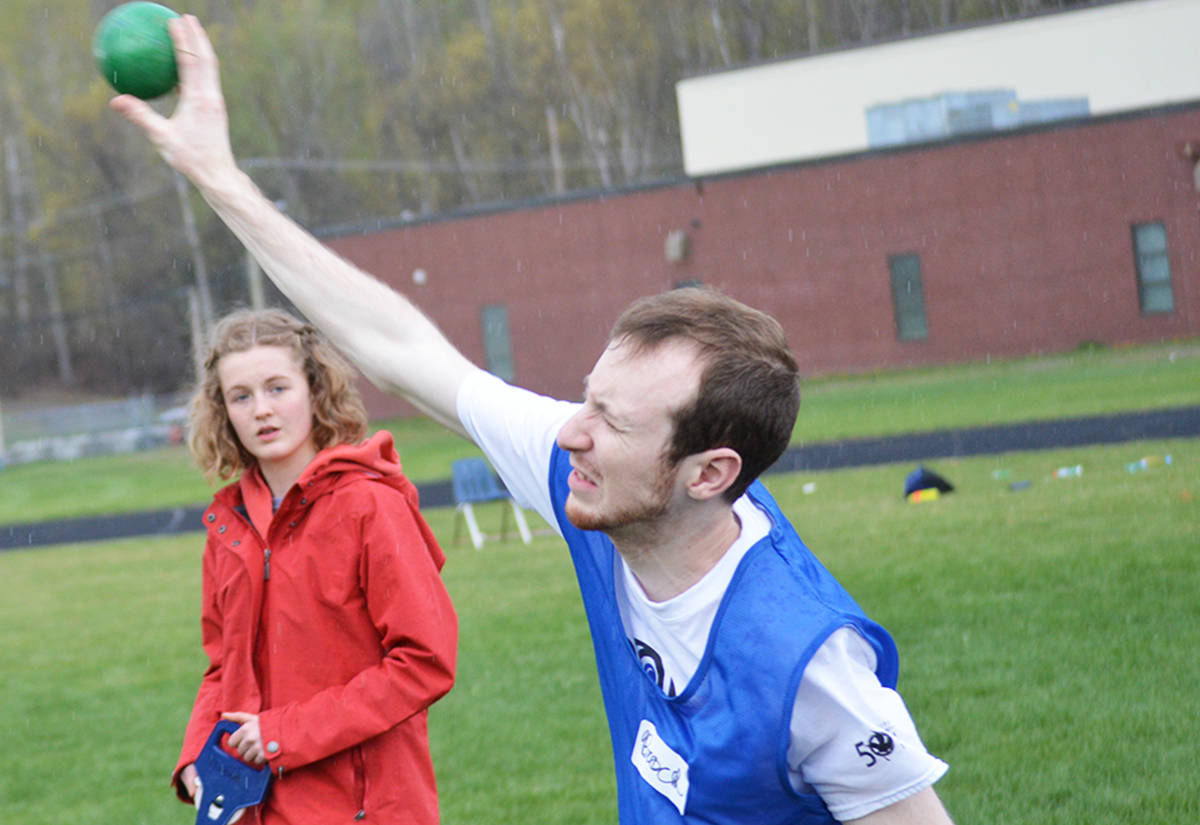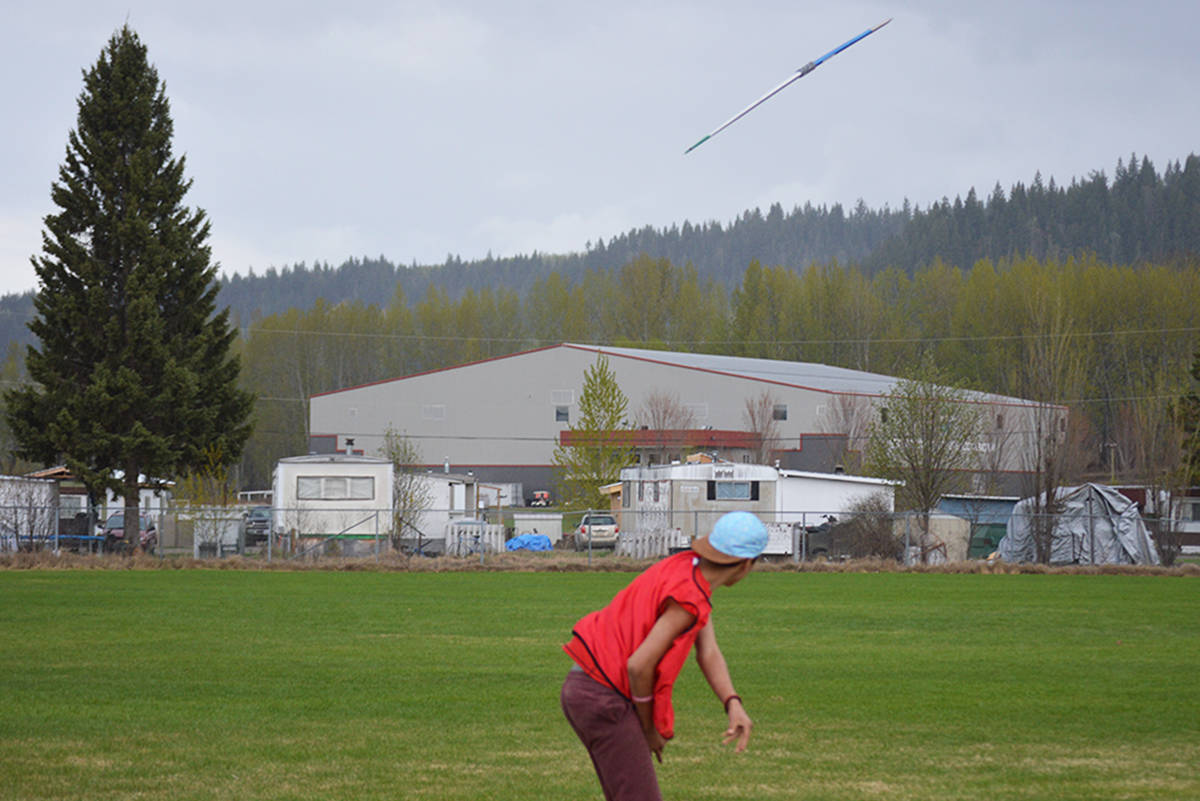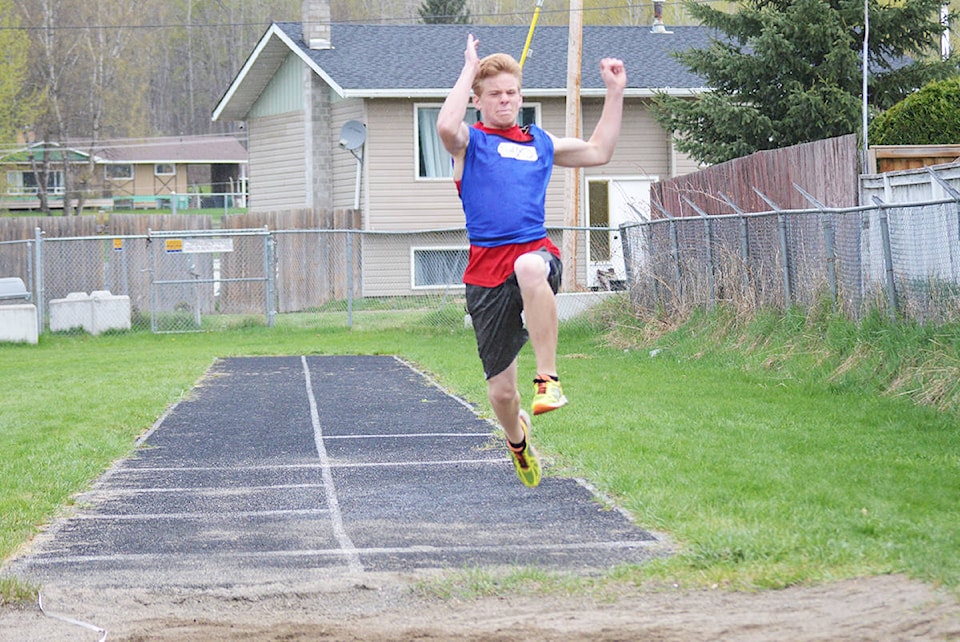Back-to-back days of inclement weather did nothing to dampen the morale of the participants, organizers and volunteers who took part in Quesnel’s Ice Breaker track and field tournament on May 3-4.
Aiding in the uplifting of moods was the spirit of inclusion on display.
In a first for the city, and perhaps the province, high school students competed against and side-by-side with local Special Olympics athletes.
“It’s really one of the goals of Special Olympics to not be this isolationist sport movement that nobody pays any attention to,” says Rick Prosk, Special Olympics program co-ordinator.
“We actually want to take it outside so other people can see and appreciate athletic accomplishments.”
Correlieu Secondary School’s (CSS’) yard stations were set up for javelin, long jump and shot put, and some temporary shelters were built nearby to stay dry between events.
Twenty-two Special Olympians and 32 high school athletes were split up into four roughly equal teams, which were guided through the events by the 30 volunteers who donated their afternoons to help out.
Green-, blue-, yellow- and red-vested competitors earned points by competing and by placing. If there was a race with six lanes, first place received six points, second place received five points, and so on.
After competing, the athletes went to a scoring table with a popsicle stick indicating their place, and the results were tallied.
High school athletes who regularly compete at javelin used regular size javelins, and all the other participants, as well as the Special Olympians, used mini-javelins, which are more like lawn darts without a pointy end.
Although they were separated into teams, there was nothing but camaraderie between all contestants, with tips on throwing and jumping being offered freely no matter the colour vest being worn.
Final tallies had the green team in first with 327 points, the yellow team in second with 275 points, red team in third with 259 and the blue team in fourth with 253 points.
“A real highlight for me was watching all of the athletes congratulate and cheer each other on,” says CSS track and field coach Janet Barker.
“It started right from the first event of the meet, when one of the high school athletes and one of the Special Olympics athletes exchanged a huge hug and high five after their team won the relay race.
“I think seeing them treat and respect each other as fellow athletes and competitors showed that we at least made a good start towards meeting our goal.”
Prosk echoes the positive sentiment, saying the two-day event was a highlight of 14 years of Special Olympics involvement.
“I liked the fact that the high school athletes seemed to genuinely enjoy themselves,” he says.
“There was an honest recognition and appreciation of the effort that the Special Olympics athletes were exerting, and maybe a bit of surprise and awe at some of their athletic accomplishments.
“We had hoped to see some camaraderie among teammates and acceptance that Special Olympics athletes are athletes.”


